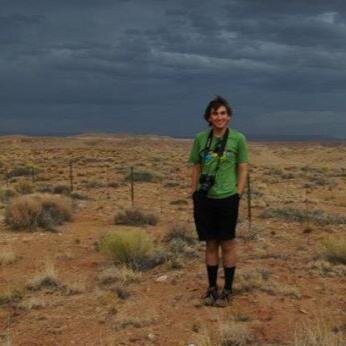 |
By David Flack (University of Reading) 13th March 2017 |
April is now rapidly approaching, and with it the UK often experiences showery conditions (April Showers). Throughout the course of my PhD (to be submitted next week) I’ve been examining the forecast of different convective thunders storms in different regimes (see my earlier post explaining about the different regimes), so for this blog will focus on what I have found about the forecasts of showers.
Now, whilst we experience showers throughout the year, we generally expect them to be more frequent in April, as the temperatures start to rise and convection changes from being mainly over the sea to over the land. As with most equilibrium convection it’s difficult to predict the location of these showers, which can (in certain situations) result in flooding. See below for a typical April showers case (NERC Satellite Receiving Station, University of Dundee, Scotland, 2012).

To consider the behaviour of showers in forecasts we use convection-permitting models (grid lengths of around 1 km) and run these multiple times to create and ensemble (see earlier posts by Peter Clark and myself for more). Using ensembles allows us to consider different outcomes of the forecasts in terms of whether there will be rainfall, how heavy will it be and where will it be?
In the latest bit of research I have done (currently under review in Monthly Weather Review) I have shown that forecasting the exact location of showers is very difficult. The research I have done assumes we know everything about the initial conditions for the forecast (so have perfect observations of what the atmosphere is like at the start of the forecast) and assumes that our large-scale models are perfect (so we can generate perfect boundary conditions for our forecast). Even then we can only predict the location of showers to around 10 km or so. Note that this is a best case scenario, it’s likely to be a larger distance in reality – more details can be found in my post on the Meteorology Department’s PhD blog.
So how can we communicate to the general public about this uncertainty? Well, it’s difficult – especially as we are still researching this uncertainty so don’t yet know that much about it. There are however ways we can, and do, communicate the risk:
- Indicate a region where showers are likely to happen – this is what is currently done on TV weather forecasts
- Indicate the chance of having a shower pass over a certain location – this is also done “you’ll be unlucky to catch a shower” is a phrase that is often used in local TV weather forecasts – what this means is showers are possible within your region but we don’t know if you will be effected.
The question is, and it will always remain, are the better ways to communicate this uncertainty? How can we communicate this on apps (as more and more people are just glancing at their phones for such forecasts)? This is difficult and I won’t cover it – but what I will suggest is a technique that I often use (other than looking at the radar images online and seeing where the showers are moving).
Consider I want to know if a shower is going to hit Reading – I consider the Reading forecast, and the forecast at different locations near Reading e.g. Basingstoke, Newbury, Maidenhead and Wallingford. If I see a showers icon for any of the five locations considered I then know there is a change that a shower is possible at my location.
As we continue to research into this area we will learn more about the uncertainties associated with predicting showers, and once we know more we can then communicate that better in weather forecasts.

How does a high-resolution model used for weather forecasting contribute to the evidence that summer downpours in the UK may intensify with climate change? Regard Telkom University